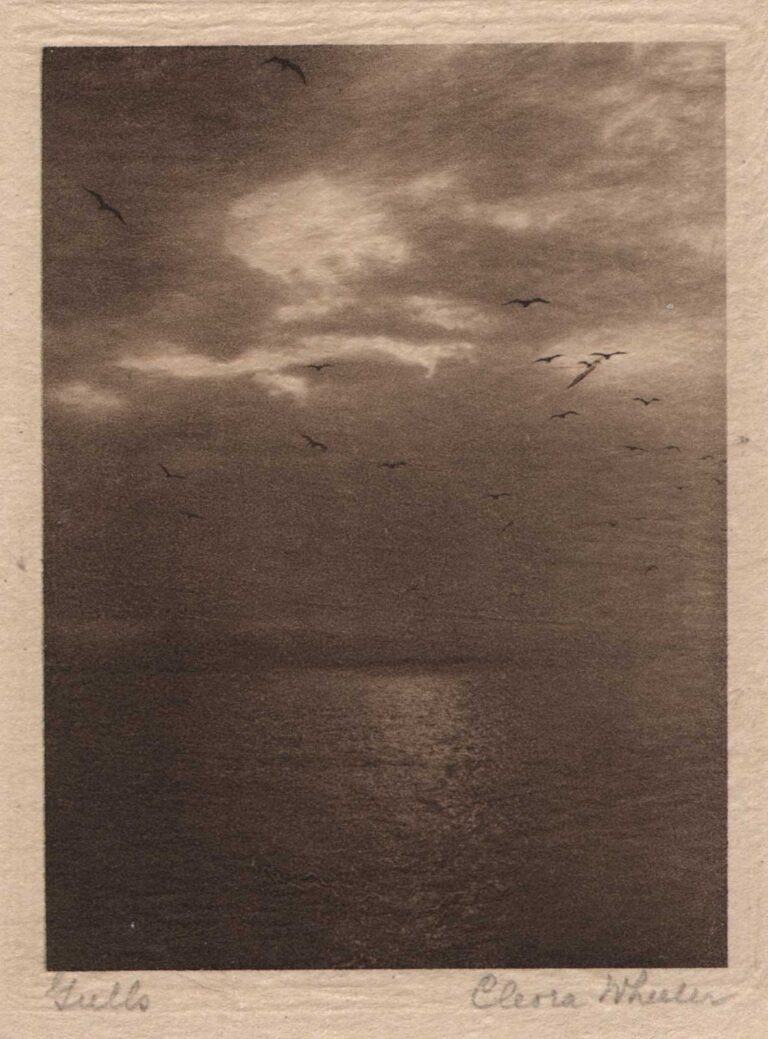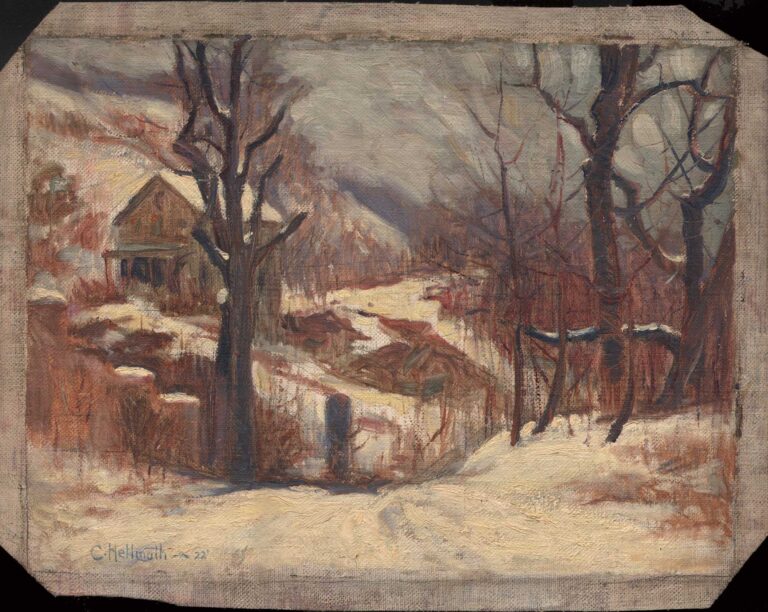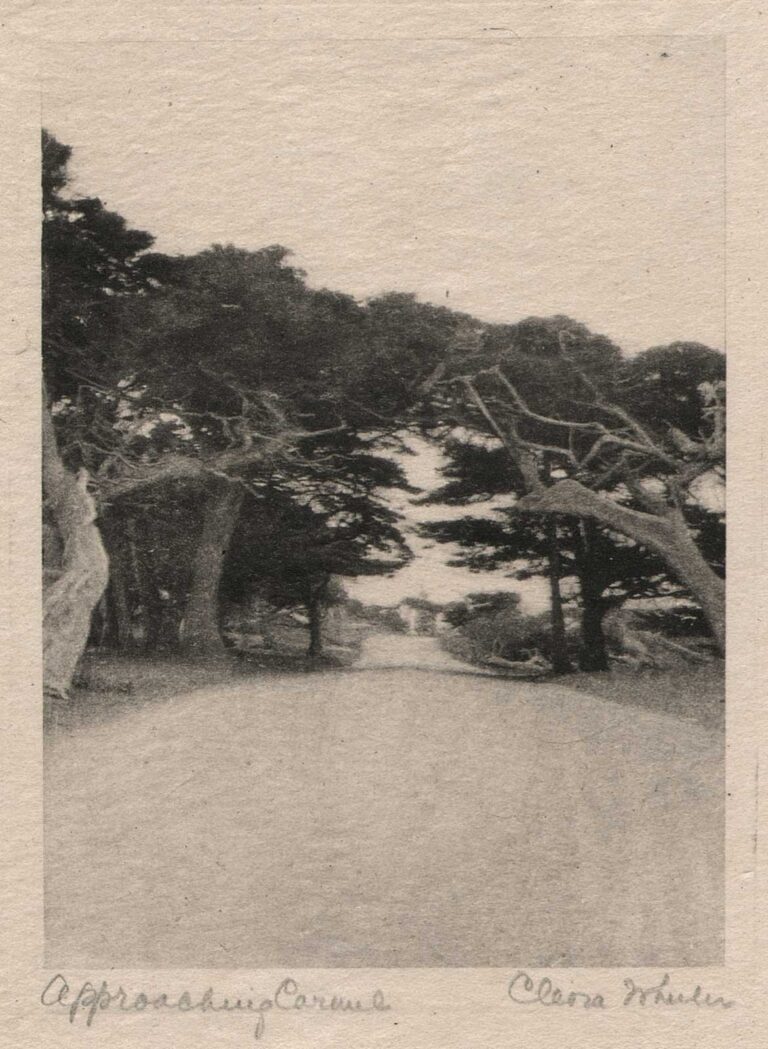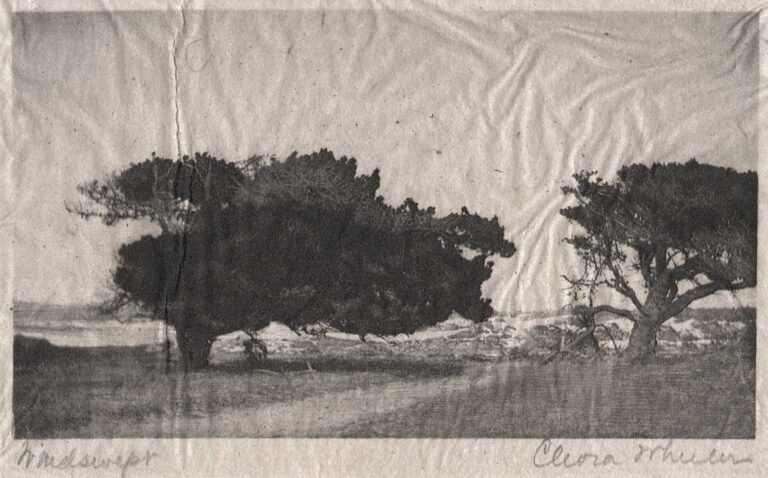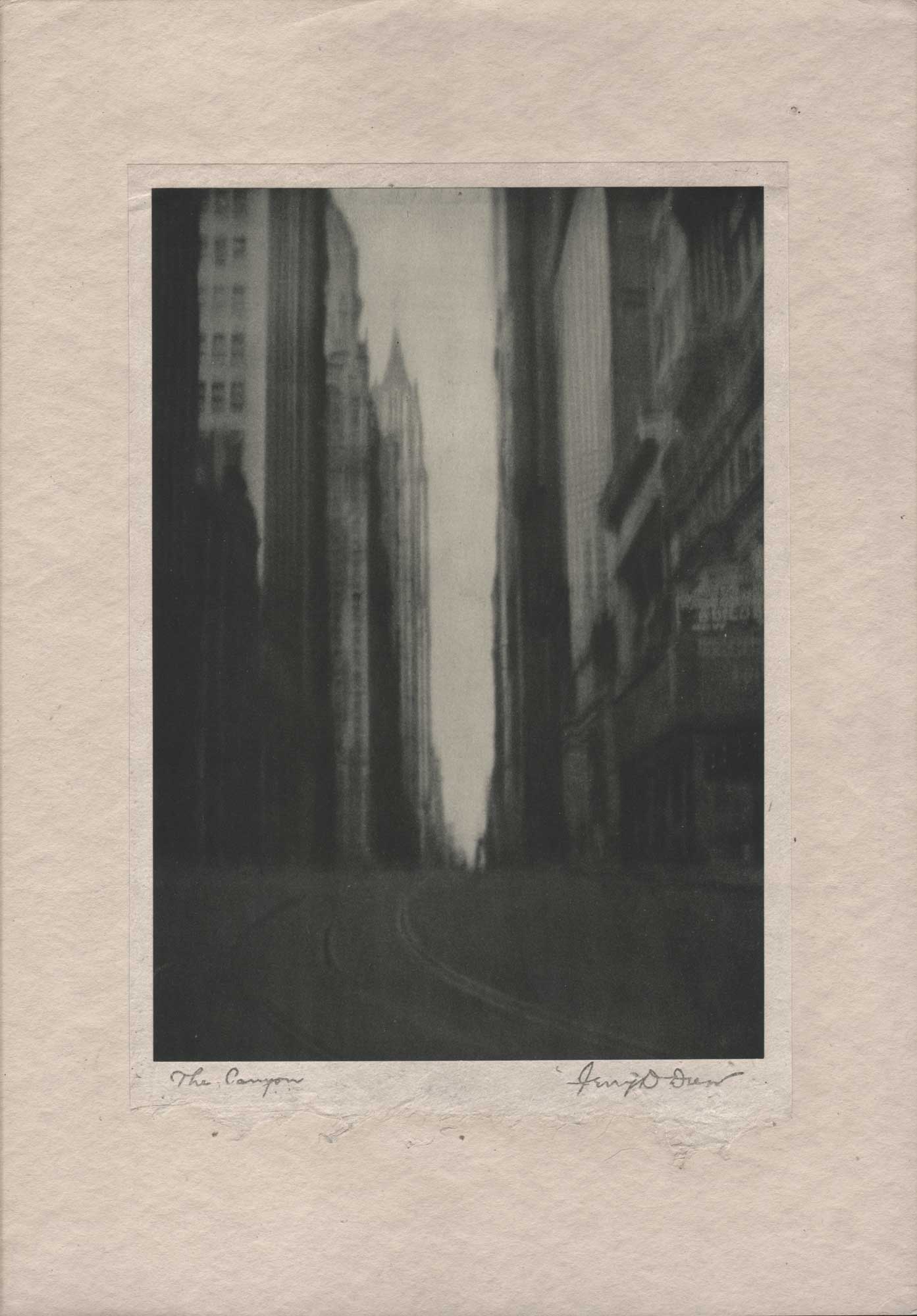
The Canyon
The first pictorial treat to attract our eye was Jerry D. Drew’s “The Canyon,” a powerful, subjective picturing of lower New York. A dark, canyon-like street filled with deep shadows contrasting golden highlights. It has the charm and force of a Brangwyn etching. ⎯ John Paul Edwards: The Eighth Pittsburgh Salon, Photo-Era, May, 1921
Jerry D. Drew in “The Canyon,” a city street flanked by very tall buildings has made a picture of great dignity, and the first to be purchased at the 1921 Salon. -American Photography, May, 1921
In his appropriately named cityscape vista: The Canyon, Jerry D. Drew uses streetcar tracks in the foreground to lead the viewer deeper into his New York City composition. This is undoubtedly Drew’s most famous published photograph.
A 2010 observation by Claes Källarsson on Tumblr gives us more information on the location:
…”the pointed building looks like the Woolworth Building, which would place this photo in Lower Manhattan, New York City, on Broadway looking uptown.
In fact, it would’ve had to have been photographed right about here, at the north end of Bowling Green, where the then-existing streetcar tracks of the Broadway Line would’ve curved, just like in the photo.”
Because he was professionally associated with his own lithography firm and on the publication committee of the Pictorial Photographers of America, it may not be so unusual Jerry Drew chose to make this exhibition print from his photograph: a halftone reproduction removed from the 1922 issue of Pictorial Photography in America. Trimmed, elaborately tipped to a fine sheet of deckled edged paper, autographed, and additionally mounted on another buff sheet of cream paper stock, the work surely stands apart from the collected volume and would have made a fine argument for others to copy the practice of mounting plates from the annual volumes in order to eliminate the need for darkroom work.
✻ ✻ ✻ ✻ ✻
Jerry Dearborn Drew: 1880-1968
1880: Born in November in Haverhill, MA
1903: Graduates from Brown University. Reference in Brown Alumni Directory that he and wife Helen Whitemarsh Drew resided at 192 Park St., Montclair, N.J. Helen Drew was herself an accomplished amateur photographer. Her portrait: “Child Study” was chosen best photograph of the month in the Pictorial Photographers’ Competition for March, 1923, with a halftone reproduction published in the April, 1923 issue of the Bulletin of the Art Center. Earlier, in the 1920 edition of Pictorial Photography in America, both Helen and Jerry Drew had published photographs: “Spring O’ The Year”, by Helen Drew and “The Lifting Mist” for Jerry D. Drew. (Helen Blaisdell Whitmarsh Drew: 1881-1978)
1912: Drew listed as Secretary of the Arthur C. Harris Company, a lithography firm est. 1902. They were one of the country’s largest manufacturers of perforated labels used in the garment industry: “perforated silver tickets in the put-up of fine cotton cloths.” Based in Staten Island, N.Y., by 1915, Jerry Drew was also Director of the company, which in late 1921 he became part owner of when it became the Harris-Drew Company, Inc. By 1926, the company was apparently dissolved. (notice: Marvyn Scudder Manual of Extinct Or Obsolete Companies)
1920: Listed as Corresponding Secretary of the Pictorial Photographers of America: (The American Annual of Photography 1921)
1924: November: Drew elected Treasurer of the PPA.
1926: President of the PPA. Here is an interesting bit of surviving correspondence: a TLS to Karl Struss in the Stephen White Collection of Karl Struss Papers at the Amon Carter Museum of American Art.
1930: Representing the PPA Publication Committee.
1968: Passes at 87 years of age in North Carolina.
